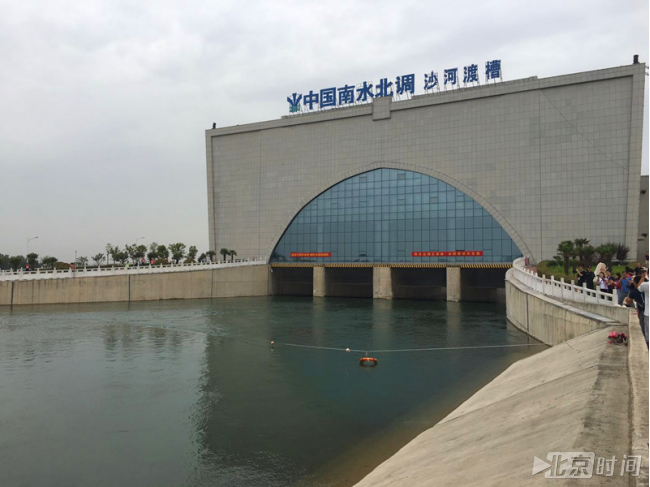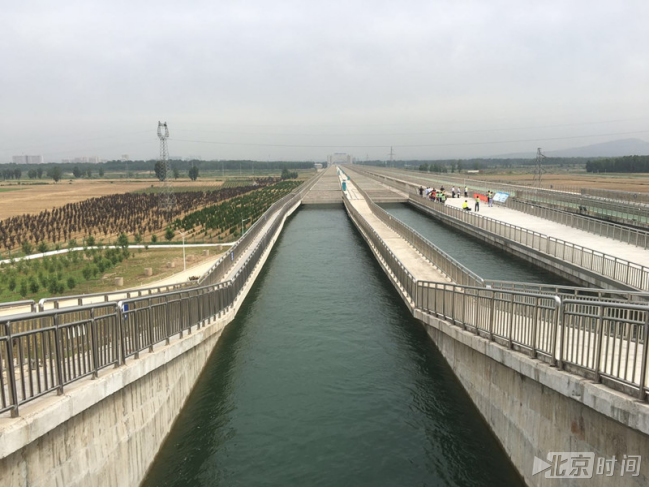On May 29, a group of journalists conducted field reports on the Shahe Aqueduct, which is located in the city of Pingdingshan, Henan province. The aqueduct is a major infrastructure in the central route of the South-to-North Water Diversion Project, with its length, width, size and other parameters all ranking number one in the world. Trees are planted along the two sides of the aqueduct, which was put into use four years ago. Water running in the aqueduct is clear, while all facilities in the control room are spotless and well-maintained. The project exhibits the hardworking spirit of the maintenance staff in its every detail.

World's largest aqueduct project
The central route of the South-to-North Water Diversion Project traverses 116.7 kilometers in Pingdingshan city, accounting for 15.7 percent of its total length in Henan province. In Pingdingshan alone, the South-to-North Water Diversion Project passes through 113 rivers and ditches, has 223 buildings including aqueducts, culverts, inverted siphons and bridges, as well as four major crossover projects: the Shahe Aqueduct, the Beiruhe Inverted Siphon, the Li River Aqueduct, and the Enclosed Channel Project of Baofeng Railway Station.

The beam-typed Shahe Aqueduct is 1,666 meters by length, with a U-shaped body made of prestressed reinforced concrete. Within the aqueduct, four water channels are arranged in parallel to one another, each one 8 meters wide and 7.4 meters high. The four water channels are separated from one another, and each two are supported on a frame. The channel floor is made of reinforced concrete hollow piers, and the foundation is made of cast-in-place piles. The large section aqueduct body is constructed partially in a factory, with the mold manufactured in advance and the casting completed in a single pour. Each flume of the beam-type aqueduct weighs up to 1,200 tons, and the technique of using an aqueduct construction machine was the first instance of using largescale prefabricated aqueduct engineering facilities in China, filling a domestic technological void in this engineering field. The aqueduct itself has a thin-wall U-shaped two-way prestressed structure, with the thinnest place measuring only 35 centimeters. In addition, the engineering of the aqueduct takes full considerations of water weight, dead weight, seismic force, temperature and other loads, adding more complexities to the project.
Nevertheless, not a single leakage has been spotted so far, which testifies to the effectiveness of the waterproof technologies applied in constructing the aqueduct.